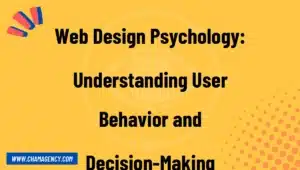It’s no secret that effective copywriting plays a crucial role in captivating and persuading website visitors. Engaging content not only captures attention but also influences the readers’ actions. Whether you aim to sell a product, promote a service, or simply engage your audience, mastering the art of persuasive copywriting is essential. Here are some valuable tips to help you create compelling website copy:
1. Understand Your Target Audience
Before writing persuasive copy, it’s vital to have a clear understanding of your target audience. Conduct thorough research to identify their needs, desires, pain points, and aspirations. By empathizing with your audience, you can tailor your content to resonate with them on a deeper level.
Consider crafting buyer personas that represent your ideal customers. This allows you to speak directly to their specific interests, challenges, and goals. When your copy feels personalized, readers are more likely to connect with your message.
2. Grab Attention with Powerful Headlines
The headline is the first impression your website visitors will have of your content. It must be attention-grabbing, intriguing, and compelling. Avoid generic and vague headlines that fail to entice the reader.
Instead, use power words, trigger emotions, and create a sense of urgency or curiosity. A well-crafted headline sets the tone for the rest of your copy and draws the reader in. It should make them eager to learn more.
3. Craft Persuasive and Benefit-driven Copy
Focus on highlighting the benefits and value your products or services offer to the readers. Clearly articulate how your offering solves their problems or improves their lives. Use persuasive language and descriptive storytelling to engage their emotions and imagination.
Showcase testimonials, case studies, or success stories to provide social proof and build trust. When readers see real-life examples of how your product or service has positively impacted others, they are more likely to feel confident in making a purchase or taking the desired action.
4. Create Scannable and Well-Formatted Content
Remember that most website visitors skim through the content rather than reading every word. Structure your copy with headings, subheadings, bullet points, and short paragraphs to make it scannable and easily digestible.
Use bold or italicized fonts to emphasize important points or key phrases. Incorporate relevant images, infographics, or videos to break up text-heavy sections and add visual interest. By making your content visually appealing and easy to navigate, you can keep your readers engaged and encourage them to explore further.
5. Call to Action (CTA)
Every persuasive copy should include a strong and clear call to action (CTA). This is the step you want your readers to take after consuming your content. Whether it’s signing up for a newsletter, making a purchase, or contacting you for more information, the CTA must be compelling and easy to follow.
Use action verbs and create a sense of urgency to prompt immediate action. Place the CTA strategically within your copy, ensuring it stands out and is easily clickable. A well-crafted CTA can significantly increase the conversion rate of your website visitors.
Conclusion
Mastering the art of persuasive copywriting is an ongoing process that requires practice, experimentation, and continuous improvement. By understanding your target audience, crafting attention-grabbing headlines, creating benefit-driven content, formatting it effectively, and using compelling CTAs, you can boost the power of your website copy.









